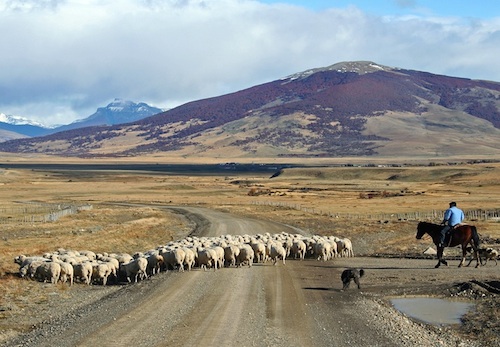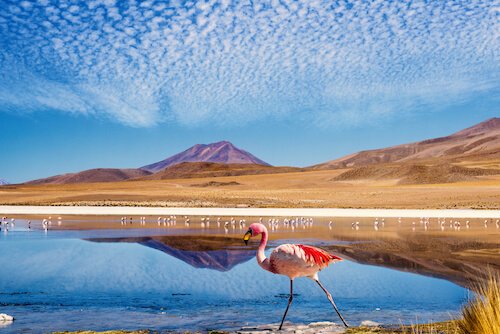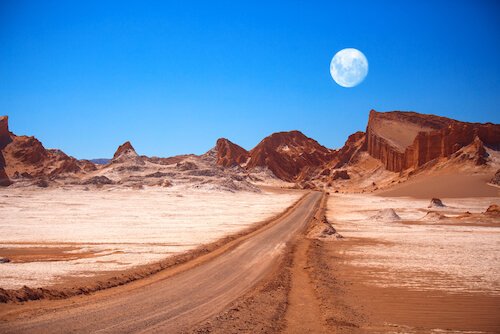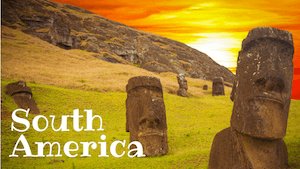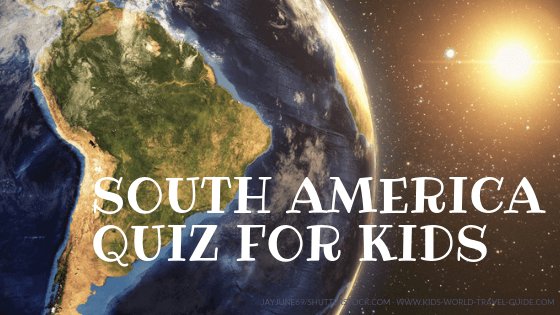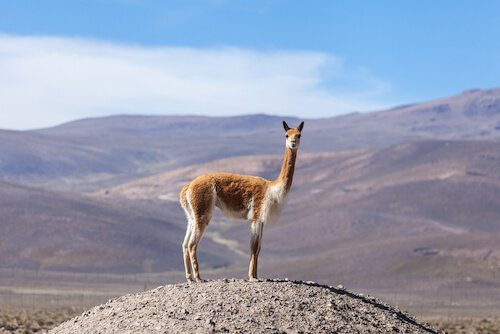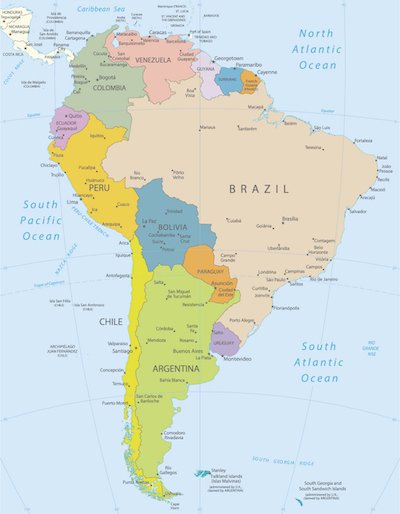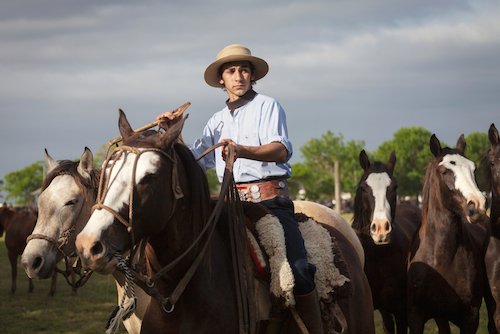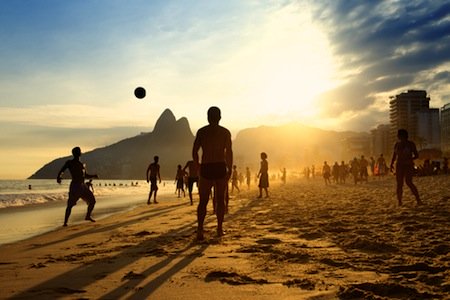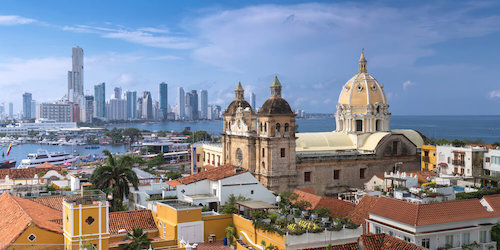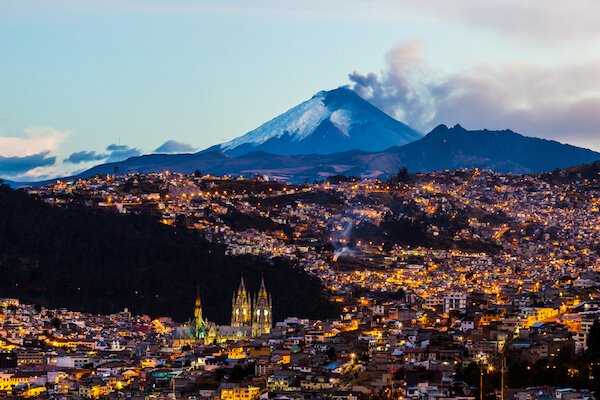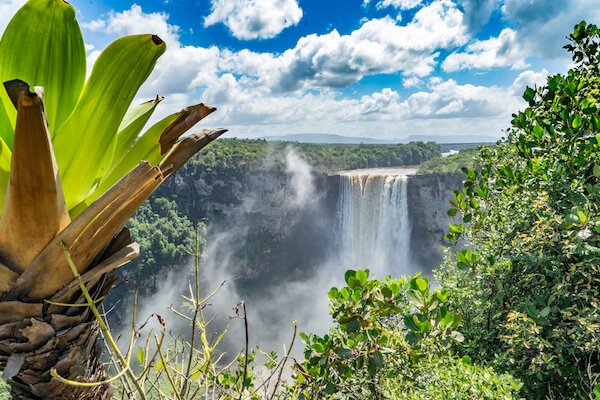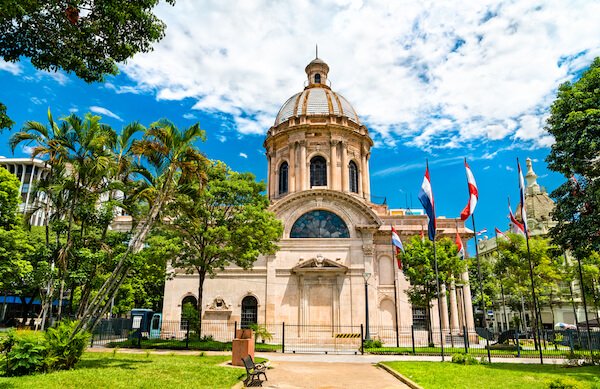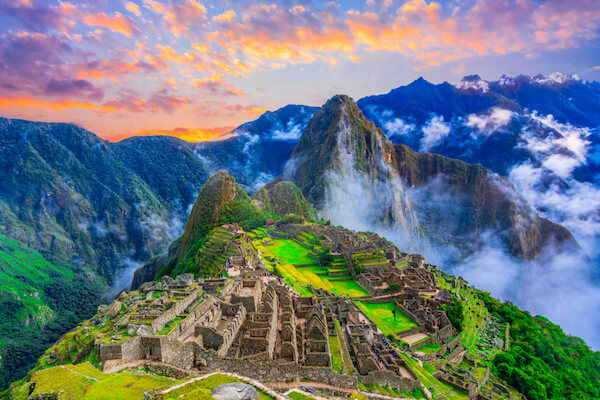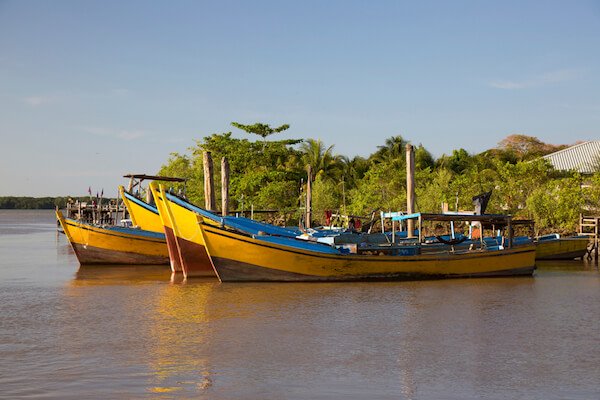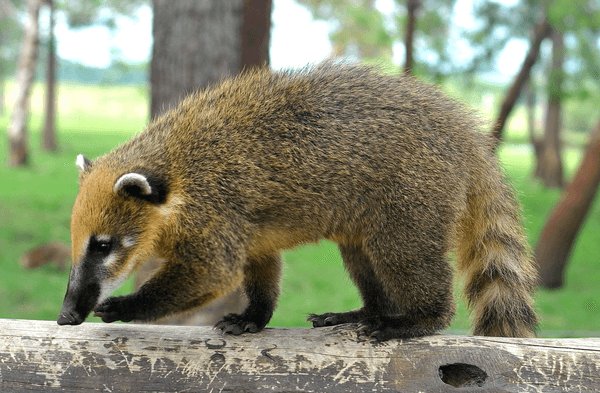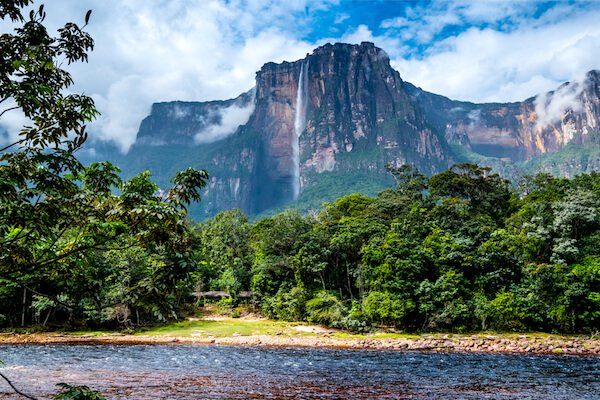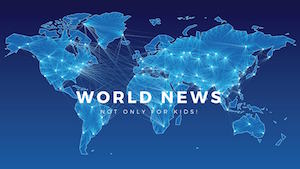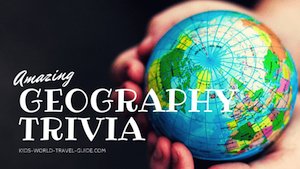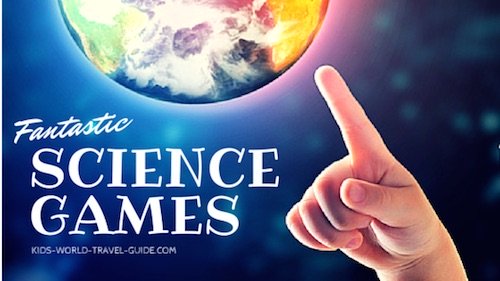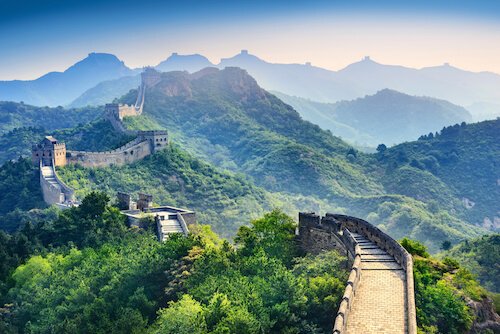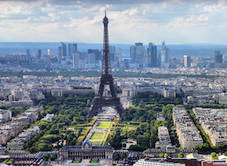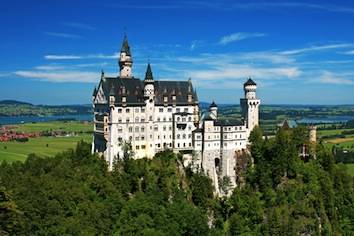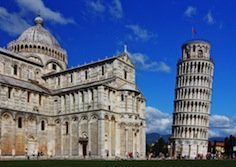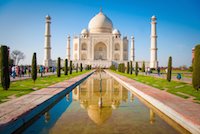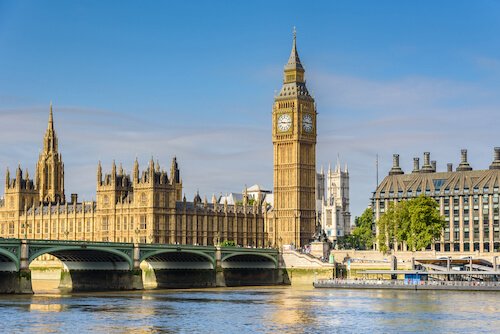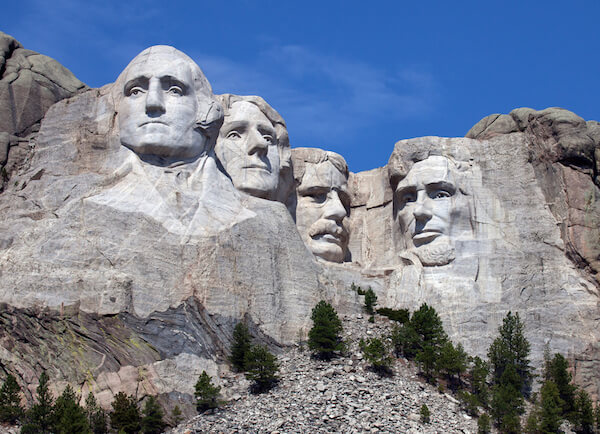- Homepage
- Chile Facts
- 32 Facts about Chile
Facts about Chile
Chile for Kids
Enjoy our fascinating facts about Chile, Chilean superlatives and Chile's "firsts" that are marvellous and astonishing. This South American country has stunning landmarks, friendly people and lots of wonderful superlative to show!
This is an extension page to our Chile Facts for Kids page.
1. Chile is the "longest country in the world" that stretches from North to South in a narrow strip. The South American country stretches over a length of 4,300 km/ 2,670 miles and has a maximum width of 350 km/ 217 miles at its widest point.

2. Chile is one of the two southernmost countries in South America that border the South Pacific Ocean - the other country is Argentina.
3. Chile borders three countries: Peru, Bolivia and Argentina. The border between Argentina and Chile is the longest border on the South American continent with 6,691 km/ 4,157 miles. The Argentina - Chile border is also the third longest international border in the world.
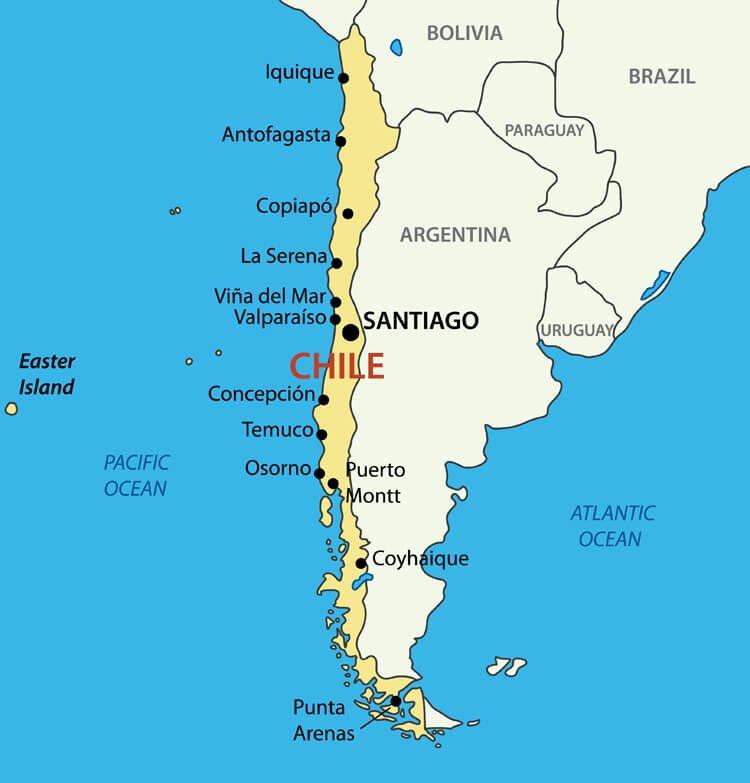 Map of Chile
Map of Chile4. Chile is the seventh largest country of the 12 South American countries and Chile is larger in size than Texas/USA. Chile is slightly bigger in land area than Zambia or about three times the size of the UK.
5. Facts about Chile: About 19 million people live in Chile in 2023. Most people live in the central valley region around the capital city Santiago. The northern and southern parts of the country are only sparsely populated.
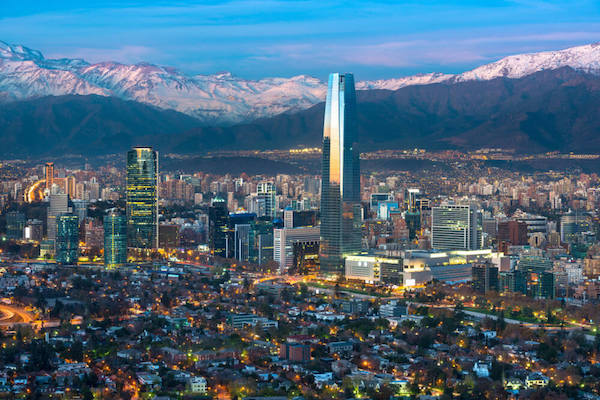 Santiago de Chile
Santiago de Chile6. The capital city Santiago with 7 million inhabitants is the country's largest city. Santiago is located in the central valley between the Chilean coastal mountains and the Andes mountain range.
7. Spanish explorer Pedro de Valdivia founded Santiago in 1541 and named it Santiago de Nuevo Extrema. Santiago became the capital city after the Declaration of Independence in 1810. The name of the city was chosen by Valdivia in honour of the Spanish patron saint James the Great. The name James is referred to as Jacobo, Jaime, Diego or Tiago in the Spanish and Portuguese languages.
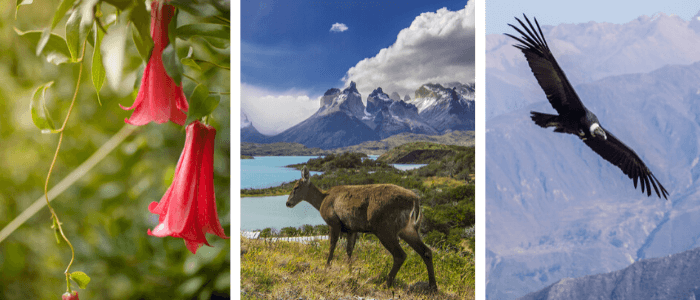 National Symbols of Chile: copihue, huemul and condor
National Symbols of Chile: copihue, huemul and condor8. Chilean national symbols include the condor, a vulture and the huemul, a Chilean deer as well as the copihue, which is the national flower.
Facts about Chile | Geography
9. Chile is located along the Pacific Ring of Fire and counts about 3,000 volcanoes. 36 volcanos in Chile are active. Earthquakes occur here regularly. Osorno volcano, which you see below, is in Southern Chile and is one of the most active volcanoes.
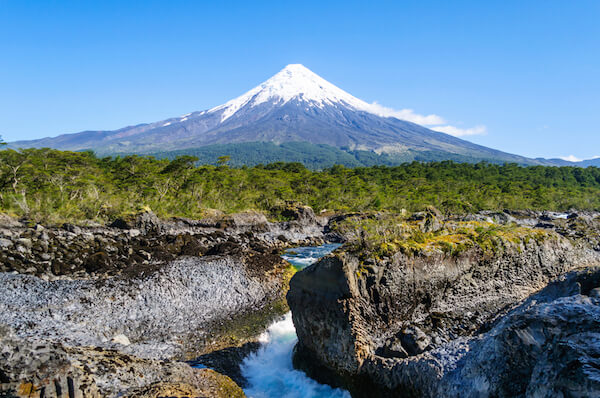 Osorno volcano in Chile
Osorno volcano in Chile10. The strongest earthquake ever measured worldwide occurred in central Chile in 1960. The Valdivia earthquake had a magnitude of 9.4 on the Richter scale.
11. The highest peak of Chile is a volcano called 'Nevado Ojos de Salado' with a height of 6,880 m/ 22,572 ft. This is the tallest active volcano in the world.
12. Chile is home to world's highest crater lake which is called Ojos de Salado. The name originates from the Spanish language and means 'Eyes of salt'. 'There are many salt lakes nearby throughout the Atacama region such as the Laguna Verde (green lagoon).
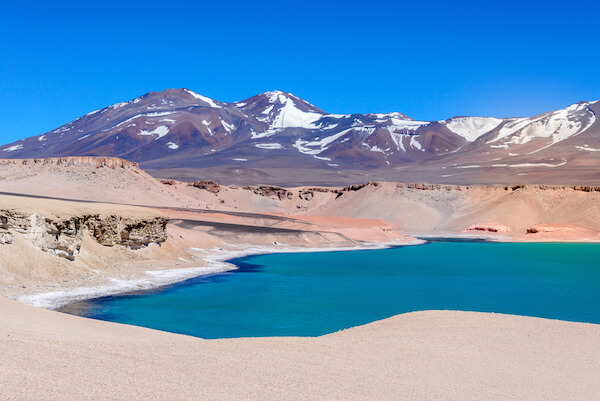 Laguna Verde in Chile
Laguna Verde in Chile13. Facts about Chile: Chile houses six UNESCO world heritage sites. These are all cultural sites. Rapa Nui National Park is one of the six UNESCO world heritage sites in Chile. Easter Island which is often referred to as Rapa Nui is located about 3,700 km/ 2,300 miles off the Chilean coastline.
14. Easter Island is the most remote inhabited island of the world. Rapanui comes from the indigenous name for the people of the Easter Island. The Rapanui people call the island tepito or tehenua, which means 'navel of the world'.
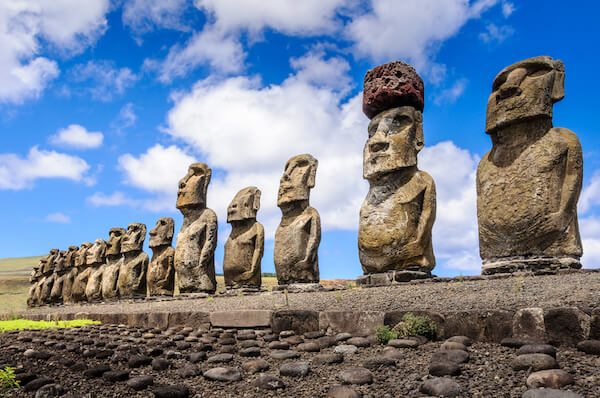 Easter Island Statues are called Moais
Easter Island Statues are called Moais15. There are about 900 statues and over 300 ceremonial platforms all over the Easter Island.
16. The Loa River is the longest river in Chile. Its source is located in the Andean mountains. Chile's longest river has a length of 440 km/ 270 miles and passes through the Atacama desert.
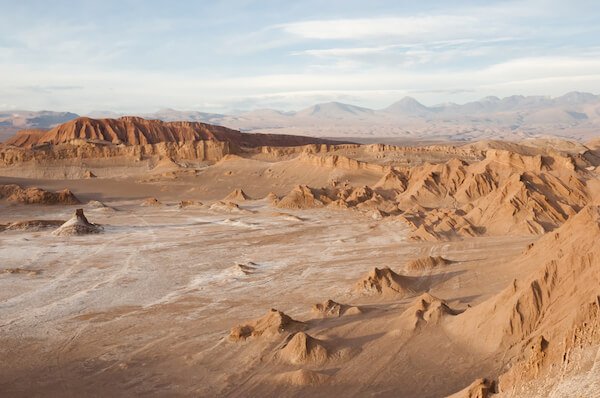 Moon valley in the Atacama desert
Moon valley in the Atacama desert17. The Atacama desert in northern Chile is the driest desert in the world. This is the world's only desert that receives less precipitation than the polar deserts. The average rainfall is only about 15 mm/ 0.6 inches per year!
18. The Atacama desert is a desert plateau between the coastal mountains and the Andes mountains. The plateau is called Altiplano. The driest parts of the desert are located close to the highest Andes mountain peaks. Although the Atacama desert is home to many very high mountains, even peaks above 6,000 m/ 20,000 ft are free of glaciers and only a few peaks are regularly covered by snow such as the Ojos de Salado.
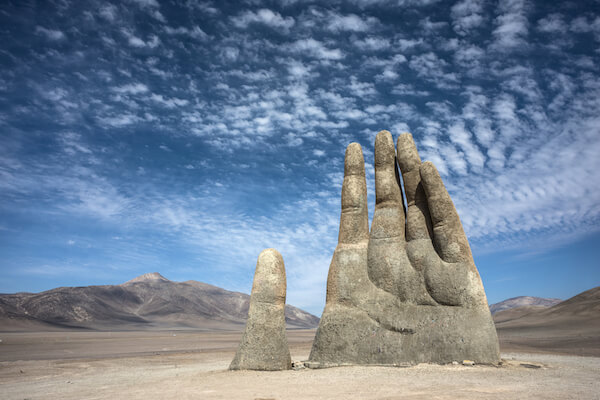 Mano del desierto - Hand sculpture in the Atacama desert
Mano del desierto - Hand sculpture in the Atacama desert19. Almost one fifth of Chile's land is protected and part of a national park. There are 41 national parks in Chile as well as 47 national reserves and 17 national monuments.
Facts about Chile | People
20. The first signs of human settlements in Chile date back over 18,500 years. Indigenous people settled in the fertile valleys and coastal regions. Prior to the arrival of the Spanish colonialists, the Mapuche people mainly settled in the central and Southern parts of Chile and successfully fought back the Inca empire that stretched as far as northern Chile.
21. Chile is the only country in Latin America, that does not recognise its indigenous people in the constitution. About 11% of the Chilean population belong to the indigenous ethnic groups.
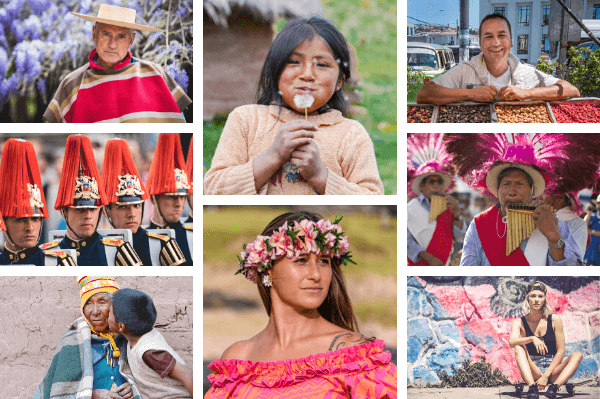 People of Chile
People of Chile22. There are 9 major indigenous groups in Chile. The largest group are the Mapuche whose livelihood once was based on agriculture, however today, most of the indigenous people in Chile live now in urban areas. The Aymara, Atacameño, Diaguita, Rapanui, Colla, Kawésqar, Quechua and Yagan are the other eight indigenous groups.
23. Spanish is the main and official language of Chile. English is spoken only by about 10% and is offered as second language in some schools. Mapudungun, the language of the Mapuche people, is spoken by about 140,000 people.
24. The Aymara people of the Chilean Altiplano are known for their colourful handicrafts and skilfully woven textiles.
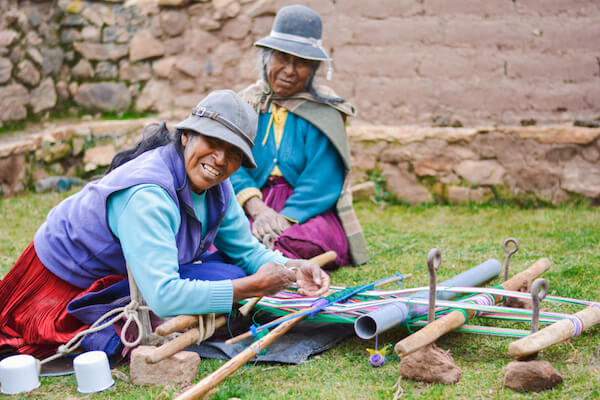 Aymara weavers
Aymara weavers25. The mummies of Chinchorro are the oldest mummies in the world - and thus are older than the Egyptian mummies! The Chinchorro mummies of Chile date back more than 8,000 years. The oldest mummified remains are from the year 7,020 BC. Over 280 were found in the Atacama desert since the first excavations began in 1914.
26. Chile hosted the Pan-American Games in October/November 2023. The Pan Am Games are the major summer sports event in the Americas and are held every four years. Chile ranks among the top ten teams of all times with the USA, Cuba and Canada leading the table.
27. Chile hosts the third largest number of refugees from Venezuela - after Colombia and Peru, according to the UNHCR in August 2019.
Facts about Chile| Economy
28. Chile is the world's largest copper producing country and houses the world's largest copper mine, Escondida mine is located in the Atacama desert.
29. Chile's main trade partners are China, the USA and Brazil. The main export products of Chile are copper, chemicals, fish, fruits and wine.
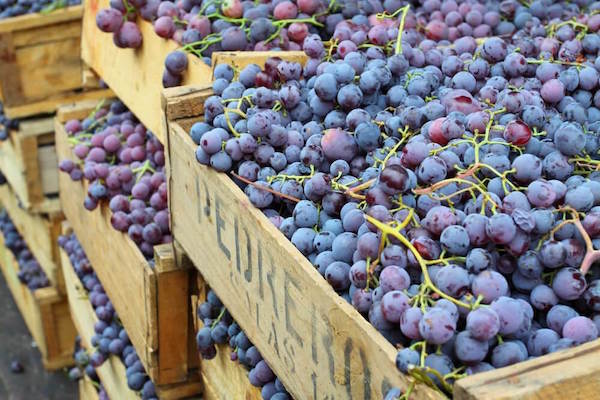 Chilean grapes
Chilean grapes30. Chile is known as one of the major wine producing countries in the world. Chile is among the top ten wine exporting countries in the world and ranked after Italy, France, Spain, the USA and Australia.
Facts about Chile | Animals
31. Chile is home to some unique animals, among them the pudús, Macaroni penguins, and roseate spoonbills.
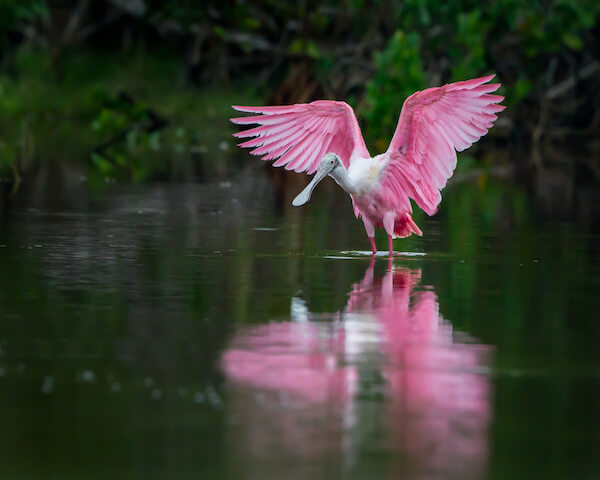 The Roseate spoonbills are unique to the South American continent.
The Roseate spoonbills are unique to the South American continent.32. The Andean condors are the biggest flying birds and have a wing span of up to 5.5 m/ 15.5 ft.
Read more about animals in Chile here.
Popular Pages
Facts about Chile: Resources
Resources for Facts about Chile page:
- Chile Official Tourism. "A new way of visiting National Parks." ChileTravel. Added 28 August 2022. Last accessed 19 December 2023
- Central Intelligence Agency. "South America: Chile." WorldFactbook. Last updated 12 December 2023. Last accessed 19 December 2023
- UN Refugee Agency. "Venezuela Crisis." UNHCR. Last accessed 19 December 2023
- Chile Official Tourism. "Five Fun Facts about Rapa Nui's Moai." ChileTravel. Last updated 18 August 2021. Last accessed 19 December 2023
- Amanda Kay. "5 Largest Copper Mines in the World." InvestingNews. 6 November 2018. Last accessed 19 December 2023
- International Workgroup for Indigenous Affairs. "Chile." IWGIA. Last accessed 19 December 2023
Image Credits on Facts about Chile: by Shutterstock.com, wikicommons or sxc.hu if not otherwise stated.
Facts about Chilean people - collage: Valparaiso - Vendor - image by jo Crebbin/ Shutterstock.com; Older gentleman, skatergirl and military parade - images by Pablo Rogat/ Shutterstock.com; Aymara girl and Aymara boy with grandmother - images by Ruslana lurchenko/ Shutterstock.com; Rapa Nui lady - image by Arlene Grace Evangelista/ Shutterstock.com; Iquique musicians - image by Larissa Pereira/ Shutterstock.com
We hope you enjoyed reading our Facts about Chile. Do you want to share your insights too? Please contact us here.
Winning Essays 2025
|
Please take note
|
***
More about Countries in
South America
Like what you read?

|
Simply share the html code below. Copy and paste onto your website, blog or Facebook page: <a href="https://www.kids-world-travel-guide.com/facts-about-chile.html">Kids World Travel Guide: Facts about Chile</a> |
